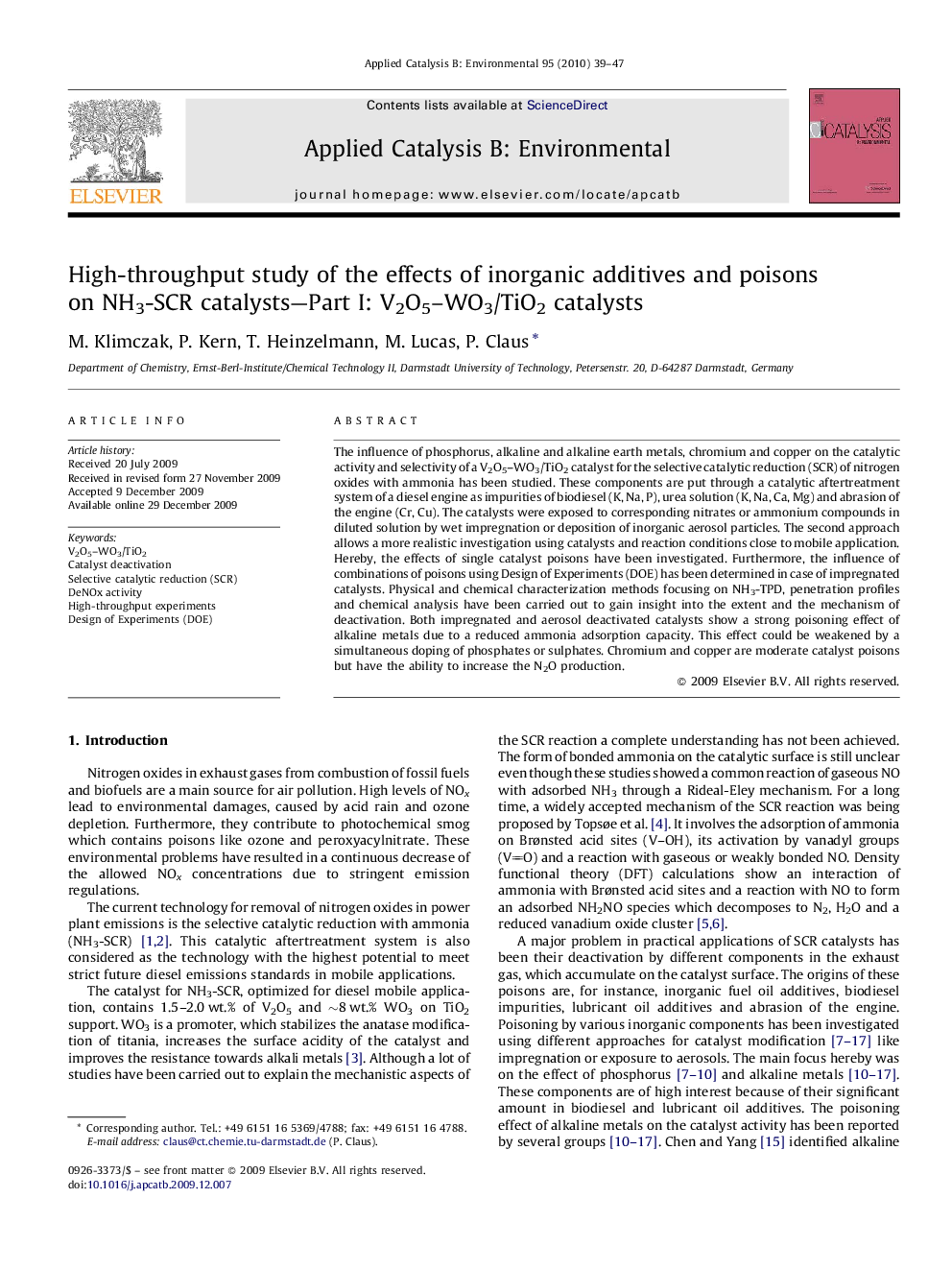| Article ID | Journal | Published Year | Pages | File Type |
|---|---|---|---|---|
| 47537 | Applied Catalysis B: Environmental | 2010 | 9 Pages |
The influence of phosphorus, alkaline and alkaline earth metals, chromium and copper on the catalytic activity and selectivity of a V2O5–WO3/TiO2 catalyst for the selective catalytic reduction (SCR) of nitrogen oxides with ammonia has been studied. These components are put through a catalytic aftertreatment system of a diesel engine as impurities of biodiesel (K, Na, P), urea solution (K, Na, Ca, Mg) and abrasion of the engine (Cr, Cu). The catalysts were exposed to corresponding nitrates or ammonium compounds in diluted solution by wet impregnation or deposition of inorganic aerosol particles. The second approach allows a more realistic investigation using catalysts and reaction conditions close to mobile application. Hereby, the effects of single catalyst poisons have been investigated. Furthermore, the influence of combinations of poisons using Design of Experiments (DOE) has been determined in case of impregnated catalysts. Physical and chemical characterization methods focusing on NH3-TPD, penetration profiles and chemical analysis have been carried out to gain insight into the extent and the mechanism of deactivation. Both impregnated and aerosol deactivated catalysts show a strong poisoning effect of alkaline metals due to a reduced ammonia adsorption capacity. This effect could be weakened by a simultaneous doping of phosphates or sulphates. Chromium and copper are moderate catalyst poisons but have the ability to increase the N2O production.
